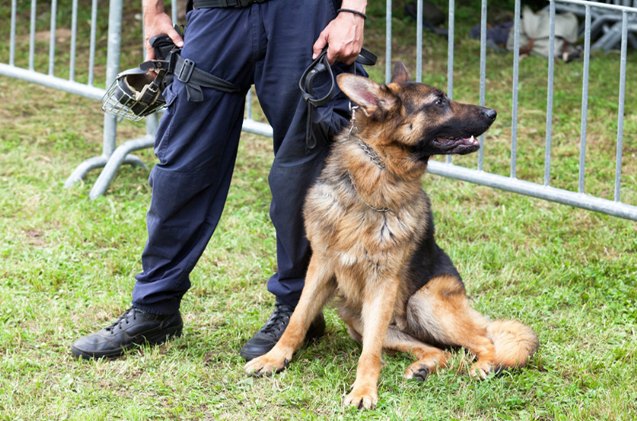Report Shows That Dogs Get Post Traumatic Stress Disorder

If you’ve ever had Post-Traumatic Stress Disorder (PTSD), you know it’s not a fun thing to have. Let’s say you were watching television when a tornado hit your home, for example. Every time you watch television in the family room and every time you hear a loud rushing noise, you could flash back to the horrors of what happened that day.
You’ll also lose sleep at night, be hypervigilant, and are seriously stressed out. Not much will calm you down and anxiety will become a state of life for a while. Your friends will find you difficult to deal with, as you’ll overreact to situations that you never would have in the past.
PTSD Symptoms Identified in Dogs For the Past Decade
And now we know that even our canine friends can get Post Traumatic Stress Disorder from their work on the bomb-sniffing team and while playing the “Let’s Go Find the Suspect” game with their handlers.
Most likely the canines probably were suffering from PTSD in the last 100 years they’ve been used in the military but no one ever officially called it PTSD until the last 12 years. During the Iraq and Afghanistan wars, that’s when veterinarians started recognizing the symptoms in the dogs.
The PTSD symptoms include the following:
- overreaction to noise
- attempt to escape a situation instead of work
- not listening and following the handler’s commands
- inability to do what the dog was trained for
When a dog on duty has PTSD, the symptoms translate to putting the handler, the military team and the dog at risk for harm in the situation.
Canine dogs that are used on police forces and in the military are on a high protein diet so they can handle the demands of the job on their adrenal glands. The standard food won’t do; it’s not high enough in nutritional content for the dog who has high requirements for vitamins and minerals.
High Cortisol Levels Make the Adrenals Vital to Responding Appropriately
If you ever have the chance to do a ride-along with a K9 dog on his police job, you’ll see that the second that the police officer turns on the siren for a pursuit, the dog’s adrenals switch to high gear. He starts pacing in the back of the police car, and if the window is open, he’ll do his best to get the scent and tell the world he’s on his way to the scene. His adrenals are on high alert for the duration of the event, which can sometimes last several hours.
All this means high cortisol levels, which can wear out the body in very little time if the dog is not getting proper nutrition. The requirements on the dog’s nervous system can leave him frazzled when he’s had one too many ‘episodes’. This is part of the reason why these dogs are only worked for about 8 years, then retired.
PTSD Treatment for the Canine Dogs
Walter Burghardt, veterinarian and Chief of Behavioral Medicine and Military Working Dog Studies at Lackland Air Force Base, reported at a San Antonio veterinary conference recently that they have a treatment plan for dogs with PTSD.
First, they will relieve the dog of its work responsibilities. Sometimes time away from the job is all that’s needed, but in other cases, the handler will need to begin exercising and working the dog in a less stressful environment. Other times, the dog will be given medications such as anti-depressants to try to help it cope.
If this doesn’t work, the dog may return to the home base for longer-term followup, desensitization and counter-conditioning. If the dog still doesn’t respond in four months, then he’s retired through adoption or given other duties to do.
Dr. Burghardt stated that 50 percent or more of the treated dogs are able to keep their jobs but without the intensive treatment, less than 1 of every 4 dogs will make it. His goal is to get the dogs out of the stress response as fast as possible.
It’s possible that this PTSD treatment will be used for other dogs as well in the future, says Dr. Burghardt. But for right now, pray your dog doesn’t get PTSD, as many veterinarians may not be familiar with the treatment.

More by Donna Schwontkowski
























